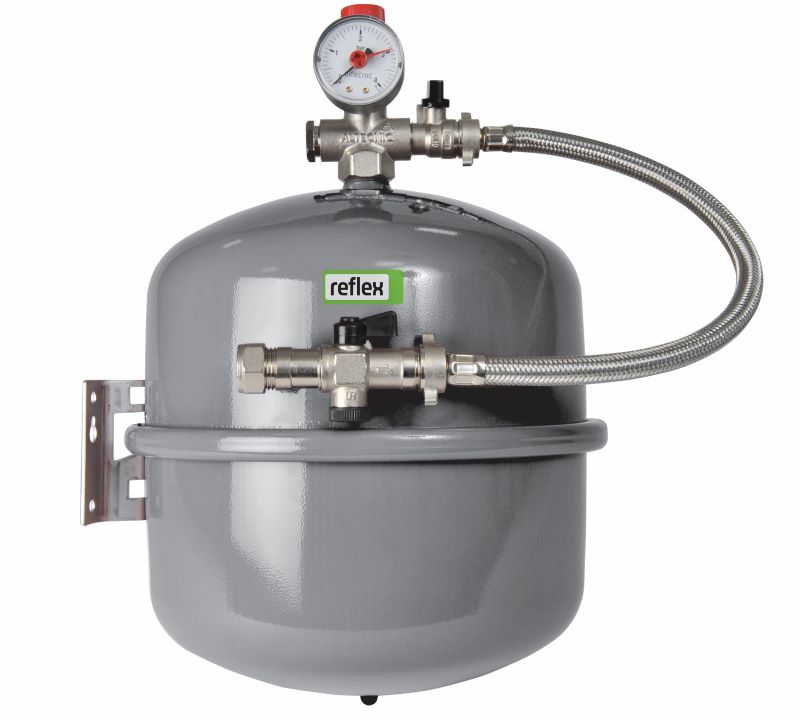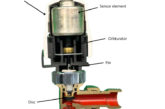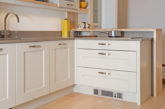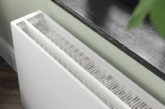
Stephen Elsmore, Senior Technical Support at Altecnic, talks through some of the common questions and troubleshooting issues related to sealed systems.
Q What are sealed systems for?
Sealed systems are designed for central heating and are widely used in Europe and other parts of the world. They are popular because they simplify installation by eliminating the need for feed and vent tanks in the system.
Q What are the essential components of a sealed system kit?
The essential components of a sealed system kit include:
– Diaphragm expansion vessel (complying with BS EN 13831)
– Safety relief valve
– Pressure gauge
– Filling loop
Q Where should key components be installed?
– Safety Relief Valve: Should be fitted on or close to the boiler on the flow pipe.
– Pressure Gauge: Preferably close to the expansion vessel and/or the boiler, in a position that is easily readable from the filling point.
– Filling Point: Should be near key components, particularly the pressure gauge, and should be a temporary connection allowing filling from the water mains, incorporating a double check valve and isolating valves.
Q What is the principle of operation of a sealed system?
In a sealed system, water cannot be compressed. When water heats up and expands, the increased volume is accommodated by the expansion vessel. The diaphragm inside the vessel is pushed by the expanded water, creating additional volume. When the water cools down, the pre-charge pressure forces the water back into the main system, maintaining constant pressure and reducing energy consumption.
Q What are the advantages of sealed systems?
The advantages of sealed systems include:
– System Flexibility: Components can be installed in various locations.
– Cost Savings: Reduced installation time lowers overall costs.
– No Feed and Expansion Tank: Eliminates issues like “pumping over” and the risk of freezing.
– Longer Life: Reduced corrosion problems extend the system’s lifespan.
– Noise Reduction: Higher system pressure reduces or eliminates boiler noise.
– Low Maintenance Costs: Requires only periodic operational checks, making the system virtually maintenance-free.
Q What are the applicable standards for sealed systems?
Domestic sealed heating systems should comply with the following British Standards:
– BS 7074: Part 1: 1989 – Application, selection, and installation of expansion vessels and ancillary equipment for sealed water systems. Code of practice for domestic heating and hot water supply.
– BS 7074: Part 2: 1989 – Application, selection, and installation of expansion vessels and ancillary equipment for sealed water systems. Low and Medium temperature hot water heating systems.
– BS EN 12828: 2003 – Heating systems in buildings. Design for water-based heating systems.
– BS EN 14336: 2004 – Heating systems in buildings. Installation and commissioning of water-based heating systems.
Q How should the size of the expansion vessel be determined?
The expansion vessel should have an acceptance volume sufficient to accommodate the volume change of the system water when heated from 10˚C up to full operational temperature or beyond under fault conditions.
Q Where should the expansion vessel be located in the system?
The expansion vessel should be connected to the system at a point close to the pump inlet to maintain positive pressures throughout the system.
Q What is included in the Altecnic Robokit Extra Sealed System Kit?
The Robokit Extra includes all essential components for a sealed system installation:
– Safety relief valve with pressure gauge and 15mm compression outlet connection
– Filling loop with braided hose
– Double check valve with integral ball isolating valve
– Isolating valve
– Pressure gauge
– Four-way manifold with tappings for direct system connection
– Wall mounting bracket for the expansion tank
Troubleshooting
Q Why is my sealed system losing pressure?
Potential causes for a sealed system losing pressure include:
– A leak in the system, such as from radiators, pipes, or connections.
– Issues with the expansion vessel, such as a loss of air charge or a damaged diaphragm.
– Air trapped in the system that needs to be vented.
Q What should I do if the pressure gauge shows high pressure in my sealed system?
If the pressure gauge indicates high pressure:
– Check if the filling loop has been left open and is continually adding water to the system.
– Inspect the expansion vessel for proper air charge; it may need to be recharged or replaced.
– Verify that the pressure relief valve is functioning correctly and not blocked or faulty.
Q What could cause the boiler to make unusual noises?
Unusual boiler noises can be caused by:
– Air trapped in the system, which can be released by bleeding the radiators and the system.
– Low water pressure, which may need to be adjusted.
– A failing pump or other mechanical issues within the boiler.
– Scale buildup within the boiler or heat exchanger.
Q Why is my expansion vessel not working correctly?
Issues with the expansion vessel can include:
– Loss of air charge in the vessel, which can be checked and recharged if necessary.
– A damaged or worn-out diaphragm, which may require the vessel to be replaced.
– Incorrect sizing of the expansion vessel for the system, which might necessitate installing a correctly sized vessel.
Q What should I do if the safety relief valve is discharging water?
If the safety relief valve is discharging water:
– Check the system pressure; it may be too high, requiring the system to be depressurised.
– Inspect the safety valve for dirt or debris that may be causing it to stick open.
– Ensure the expansion vessel is functioning properly, as an issue with the vessel can cause pressure fluctuations.
Q Why is my system not heating up properly?
Insufficient heating can be due to:
– Air trapped in the system, which can be resolved by bleeding radiators and the system.
– Incorrect system pressure, which should be checked and adjusted as necessary.
– Blockages or sludge build up in the pipes or radiators, which might require a system flush.
– A faulty pump or other components that need inspection and potential replacement.
Q What should I do if the pressure gauge does not move?
If the pressure gauge is unresponsive:
– Verify that the gauge itself is not faulty and is correctly connected.
– Check the system pressure; if it is extremely low or high, the gauge might not register properly.
– Inspect the connecting pipes and fittings for blockages or damage that could affect gauge readings.
– If the gauge remains unresponsive, it may need to be replaced.












